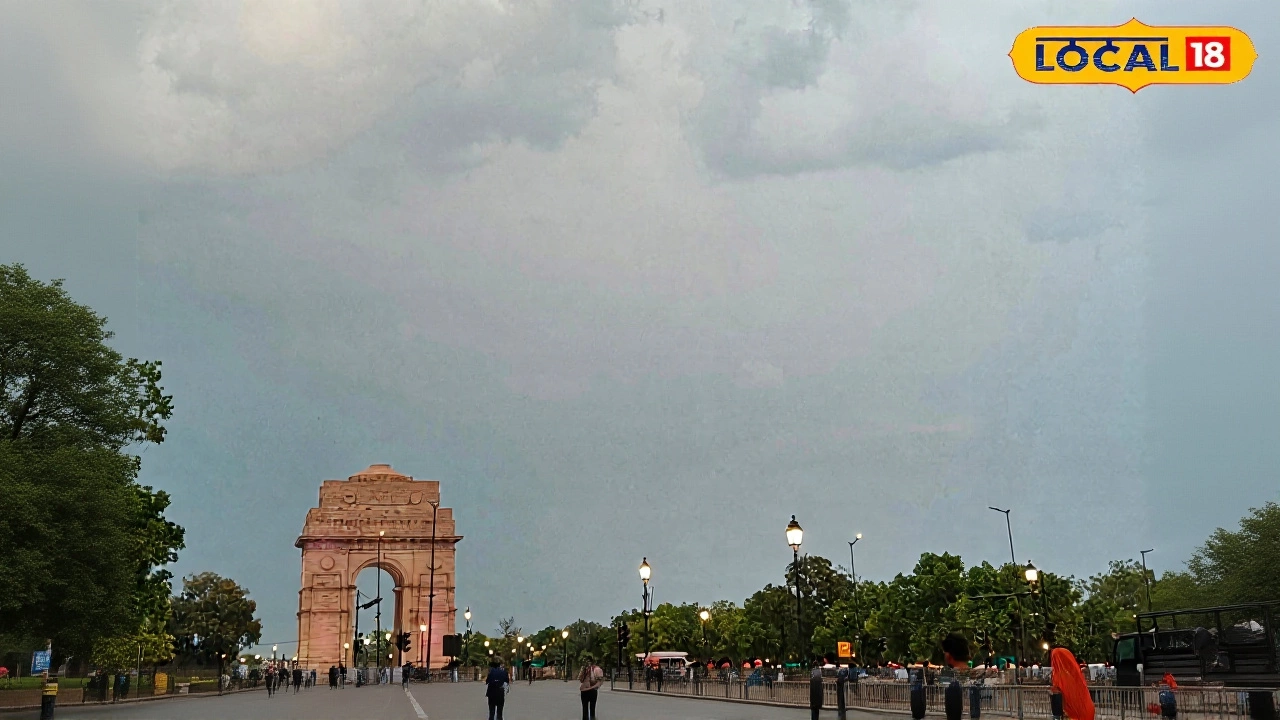On October 30 and 31, 2025, India Meteorological Department issued urgent alerts as the remnants of Cyclone Montha unleashed torrential rain and gusts up to 65 km/h across eastern and southern India — even as the storm itself faded into a low-pressure swirl. The timing couldn’t be more critical: this is the tail end of the monsoon season, when most of the country expects dry skies, but South Peninsular India — particularly Telangana, coastal Andhra Pradesh, and Yanam — is getting drenched anyway. Meanwhile, Odisha, Bihar, and Jharkhand braced for days of flooding, power outages, and disrupted transport. The twist? The same weather system, now drifting north, is triggering snowfall in the Himalayas — a rare October phenomenon that caught Nepal off guard.
Where the Rain Is Falling — and Why It Matters
The IMD’s bulletin painted a wide canvas of chaos: moderate to heavy rain stretched from the Gangetic plains of eastern India all the way to Vidarbha in Maharashtra and Sikkim in the northeast. Thunderstorms with lightning struck isolated towns in Madhya Pradesh and Chhattisgarh, catching farmers off guard as they harvested late-season crops. Coastal districts of Andhra Pradesh and north Tamil Nadu saw wind speeds of 45–65 km/h — enough to topple temporary structures, snap power lines, and send fishing boats back to harbor. In Goa and Konkan, sudden downpours flooded markets and delayed school buses. The rainfall wasn’t just heavy — it was unpredictable. One village in Bhagalpur recorded 112 mm in 12 hours; the next, just 15 km away, stayed dry.Nepal’s Unusual October Snowfall
Here’s the part no one saw coming: while India soaked up the rain, Nepal’s Meteorological Forecasting Division warned that the same low-pressure system, now interacting with a separate system over the Arabian Sea, was pushing moisture into the Himalayas. By late October 30, Koshi, Bagmati, and Gandaki provinces were already reporting moderate snowfall at elevations above 3,000 meters. At least two high-altitude locations — including Dhampus and Manang — received heavy snow, closing mountain passes and stranding trekkers. “This isn’t normal for late October,” said Dr. Sunita Shrestha, a climatologist at Kathmandu University. “We’ve seen early snow in November, but not this early, and not tied to a cyclone in the Bay of Bengal. The climate patterns are shifting.”Temperature Confusion Across the Subcontinent
While the rain poured, temperatures danced. In Ahmedabad, highs hit 36°C (97°F), while Delhi cooled to 92°F on the 30th, then dropped to 88°F the next day — a relief after weeks of lingering heat. But in Bangalore, the rain kept things mild: highs of 29°C, lows of 20°C. Meanwhile, Chennai stayed hot and humid, with 35°C and no rain — a stark contrast to nearby Vizag, where 102 mm fell in 24 hours. The inconsistency isn’t just annoying — it’s dangerous. Farmers in Marathwada planted cotton expecting dry weather; now their fields are waterlogged. Tour operators in Goa canceled beach excursions, losing an estimated $2.3 million in bookings over the two days.
What the Data Doesn’t Show — and Why It’s Alarming
Official reports say Cyclone Montha weakened to a depression by October 30. But satellite imagery from NASA and ISRO shows the system’s moisture plume stretched over 1,800 km — far beyond the typical reach of a decaying cyclone. That’s not just weather. That’s climate. The Bay of Bengal has warmed by 1.2°C since 2010, according to the Indian Institute of Tropical Meteorology. Warmer water means more evaporation, more moisture in the air, and storms that linger longer — even after they lose their cyclone status. “We’re not seeing fewer cyclones,” said Dr. Rajiv Mehta, a senior meteorologist. “We’re seeing more systems that don’t die when they should. They just turn into slow-motion floods.”What’s Next? The Long-Term Pattern
The Northeast monsoon, which usually begins in mid-October, is now arriving earlier and dumping more rain over Tamil Nadu and Puducherry — areas already struggling with urban flooding. In 2023, Chennai lost 300+ lives to monsoon floods; in 2024, it was 180. This year, the IMD has already issued 12 flood advisories in the south since October 15 — double the average for the same period. Meanwhile, Nepal’s snowfall is raising concerns about glacial melt and water security. “Snow in October means less snow in January,” said environmental analyst Anjali Thapa. “That’s not just a seasonal shift — it’s a warning.”
What You Need to Do Now
If you’re in Odisha, Andhra Pradesh, or Telangana: avoid low-lying areas, keep emergency kits ready, and monitor IMD alerts hourly. In Nepal’s mountain zones, travelers should delay treks until November 5. In cities like Delhi and Bangalore, air quality may dip as rain clears pollutants — but roads will remain slick. And everyone, from farmers to commuters, should expect more of this: storms that don’t follow the calendar.Frequently Asked Questions
How is Cyclone Montha still causing damage after weakening?
Even though Cyclone Montha lost its cyclone classification by October 30, its remnant low-pressure system retained massive moisture — equivalent to a tropical storm. This allowed it to dump over 100 mm of rain in 24 hours across parts of Odisha and Andhra Pradesh, far beyond what a typical post-cyclone system would produce. The warming Bay of Bengal is making these systems linger longer and spread farther than in the past.
Why is Nepal getting snow in October?
The same moisture plume from Cyclone Montha collided with a cold front over the Himalayas, forcing moisture upward into freezing altitudes. This is rare in October — normally, snowfall in Nepal begins in November. Climatologists link this to rising regional temperatures, which are intensifying moisture transport from the Bay of Bengal while simultaneously lowering the freezing level in mountain zones.
Which Indian states are most at risk for flooding?
Odisha, coastal Andhra Pradesh, Telangana, and southern Bihar are at highest risk due to heavy rainfall, poor drainage in urban areas like Cuttack and Visakhapatnam, and saturated soils from earlier rains. The IMD has issued red alerts for 17 districts across these states. In contrast, Maharashtra’s Konkan region, though receiving rain, has better drainage infrastructure — reducing immediate flood risk.
Is this weather pattern becoming more common?
Yes. Since 2015, the number of post-monsoon cyclones in the Bay of Bengal has increased by 40%, according to the Indian Institute of Tropical Meteorology. These storms are now more likely to linger as slow-moving depressions, causing prolonged rainfall. October rainfall totals have risen 22% over the last decade, even as overall monsoon rainfall declines. This signals a shift in seasonal timing, not just intensity.
What’s the impact on agriculture?
Farmers in Vidarbha and Marathwada lost an estimated 15% of their soybean and cotton harvests due to sudden rain during harvesting. In Tamil Nadu, paddy fields are flooded before the Northeast monsoon’s official start, delaying planting. Meanwhile, in Nepal, early snowfall damaged vegetable crops in highland markets, causing a 20% price spike for potatoes and onions in Kathmandu. The economic ripple is already being felt in food supply chains.
How reliable are the weather forecasts right now?
The IMD’s forecasts for rainfall are accurate within 85% for the next 48 hours, but predicting localized thunderstorms remains challenging. Models struggle with microclimates — like why one village in Bhubaneswar gets 80 mm while the next gets none. Nepal’s forecasts are less precise due to fewer ground stations in the Himalayas. Still, the warning systems are working: no major casualties have been reported so far, thanks to timely alerts.
